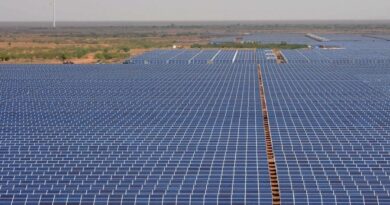Biomass – the renewable source of energy
The term ‘Biomass’ refers to all organic matter that can be used as an energy source, such as wood & plants from farming and forestry, agricultural waste, Industrial waste derived from sawmill and paper mills, organic household wastes, Algae and microalgae. The Phototrophs (vegetables and salads) use light to survive and propagate while Chemotrophs (like us) eat phototrophs! On average, biomass is made of 75% carbohydrates and 25% lignin (Lignin forms the woody cell walls of the plants).
Good biomass energy resources have a high yield of dry material and use minimal land. The Ideal crops should generate more energy than their production consume. The biomass combustion releases CO₂ into the atmosphere, new plants require CO₂ to grow which balancing the process by netting the CO₂ over a period of time. Biomass has three main categories of application; Biofuels, Biopower and Bioproducts. Biomass energy has a promising future due to its continuous creation and consumption in the society.
As per Boyle (Renewable energy, Oxford University Press, 2004) estimate, the total mass of living matter, land plants and forests are 2000, 1800 and 1600 billion tonnes respectively. The energy stored and net annual production of terrestrial biomass are 25000 EJ and 400 000 Mt y¯¹ respectively. The biomass energy contributes around 10% of total world energy requirement at present which will enhance in future due to increased awareness for this renewable energy source.
It reduces the carbon foot print from the environment and attracts and expands more number of biomass energy applications. The typical carbon cycle is described in the sketch which shows that it’s a carbon neutral and helps to reduce the carbon dioxide from the atmosphere. In addition to the conventional uses of biomass, new applications for organic matter are also being tested in the field known as green chemistry for products such as Bioplastics (particularly derived from starch which can be biodegradable), green chemical products (e.g. detergents), plant fibers cellulose textiles (derived from wood).
A new biomass called ‘Biochar’ has a bright prospect in near future due to its carbon negative and soil enhancement properties. As per Lehman & Joseph; Biochar is the carbon-rich product when biomass (such as wood, manure or crop residues) is heated in a closed container with little or no available air. The temperature range 400-500° C is suitable for Biochar formation while above 700° C makes the liquid/gas fuels. The conversion from biomass to heat requires some extraction if the fuel stream is contaminated with polluting substances.
There are some typical processes used for the energy conversion such as; direct combustion, anaerobic digestion, fermentation, Pyrolysis and other less-used techniques. The gasification of biomass has an added advantage as it closes the carbon cycle and reduces the emission in atmosphere. Also, the biomass is low in sulfur compared to coal fuel (Biomass has 0.05 to 0.20% of weight sulfur as against 2-3% of weight sulfur in coal).
The biomass conversion plants have some environment concerns like; a source of pollutants (however less polluting than a coal plant), municipal solid waste may contain heavy metals and should not be burned, paper colored inks often contain heavy metals.
The reuse or recycling of wastes is necessary prior to land filling or biomass combustion to avoid more toxic introduced into the air and water. The main challenge of using the biomass in scale (current form) is the commercial / economical viability. It requires the incentives for running the plants especially for small scale plants wherein less focus and incentives are being considered at the moment. More research is needed in reducing the energy requirement for biomass residues collection, drying and transportation to the power plants.
New forestation policies will be required in future to compensate the loss of tress in process of energy generation. We can also decentralize the processing plants to reduce the transportation of biomass. Biomass is sustainable but there is an expense in producing and converting biomass into fuels and electricity. Also, we should adopt the new promising techniques for biomass energy called ‘Briquettes’ of residues and ‘Biochar’ for conserving the soil and electricity generation.



